Canon announces EOS C500 & 1D C, the 4K DSLR – new additions to their Cinema EOS line-up
Canon has announced two new cameras in their Cinema EOS line, which started with the rather great C300. Here’s my review & test short.
Canon EOS C500
The C500 is in prototype status and is essentially a higher-end C300 with 4K output, raw and 12-bit, so pretty impressive. It’s the same sensor as in the C300, but it outputs that 4K resolution. Internally, it records the same 1080p 50Mbps like the C300 onto CF cards. If switched to 10-bit YCrCb 4:2:2 mode, the camera can operate up to 120 fps, in 2K up to 60fps in 1080p – all only through output if I interpret this correctly.
No definite word on pricing yet, but it’s expected to cost $30K-$35K.
Canon EOS 1D C
The Cinema 1D C is something new entirely. A camera in DSLR form factor mainly gear towards video users. That’s an odd but interesting mixture for sure, and the suggested retail price is $15,000.
I am looking forward to hopefully checking out the 1D C at NAB which starts on Monday (jeeez … still so much to do before we leave on Saturday!). At first glance a “proper” video camera in this form factor, lacking XLR and HD-SDI ports doesn’t make much sense, at almost the same price of a C300 ($15,000). It will however appeal to the large market of photographers who moved into video after the 5D Mark II came out. It’s no perfectly clear that Canon still sees two different markets and they created the Cinema EOS line to unify the advantages of the EOS DSLRs with the requirements of the cinema and broadcast world. A great move indeed, and I think that will make them very successful for the years to come too.
The impressive part: it can record 4K in Motion JPEG, but if the press release is correct, only at 24p. That would be a huge blow to European filmmakers as most cinema is shot at 25p here to match the standard TV frame rate. I will update this information once we know more, to me it sounds more like something that somebody mixed up when writing their press release.
It records 8-bit 4:2:2 Motion JPEG 4K to CF cards in an APS-H crop mode, 1080p up to 60fps (impressive, because the C300 can’t do that for some odd reason) in either full frame, Super 35mm crop or APS-H crop.
Canon’s Cinema EOS future – C100 as a low-end Cinema EOS?
The only thing missing now is a low-end camera in the price range of around $6,000-$8,000, which is now really only catered by Sony with their NEX-FS100. I am usually not the one to speculate, but I expect a Canon EOS C100 in around half a year if they keep up their current pace of releases, that would be at IBC 2012 in Amsterdam, possibly.
Press Release:
CANON U.S.A. INTRODUCES EOS-1D C DIGITAL SLR CAMERA FEATURING 4K HIGH-RESOLUTION VIDEO CAPTURE
Newest Addition to the Canon Cinema EOS Product Line Combines the Convenient Form Factor of a Digital SLR Camera with Full HD and 4K Video Recording up to 4096 x 2160-Pixel Resolution
LAKE SUCCESS, N.Y., April 12, 2012 – Continually advancing the frontiers of digital high-resolution motion-image capture for film, television, and other industries, Canon U.S.A., Inc., a leader in digital imaging solutions, today announced the EOS-1D C digital single-lens reflex (SLR) camera.* Delivering outstanding video performance, the compact, lightweight EOS-1D C provides video recording at 4K (4096 x 2160-pixel) or Full HD (1920 x 1080-pixel) resolution to support high-end motion picture, television production and other advanced imaging applications.
Equipped with an 18.1-megapixel full-frame 24mm x 36mm Canon CMOS sensor, the camera records 8-bit 4:2:2 Motion JPEG 4K video to the camera’s CF memory card at 24 frames-per-second (fps) or Full HD 1920 x 1080 video at selectable frame rates from 24p to 60p, making it possible for next-generation visual expression with even higher image-quality and resolution performance.
“The Canon EOS-1D C digital SLR camera was designed in response to the needs of filmmakers, television producers, and other high-level motion-imaging professionals,” stated Yuichi Ishizuka, executive vice president and general manager, Imaging Technologies & Communications Group, Canon U.S.A. “Not only does it combine 4K and Full HD video capture with a convenient design, its use of dual CF cards also offers an efficient workflow compatible with today’s post-production requirements.”
Creative Control
The Canon EOS-1D C digital SLR camera incorporates Canon Log Gamma to enable the recording of high-quality video with rich gradation expression, making possible the type of impressive image quality required in motion pictures by maximizing both highlight and shadow detail retention while also providing a high level of color-grading freedom. The EOS-1D C’s full-frame 24 x 36mm 18.1-megapixel Canon CMOS sensor makes possible a wide range of creative imaging expression, such as image-blur effects. Additional features include an expanded sensitivity range of up to ISO 25600 for exceptional motion-imaging results with reduced noise even in low-light settings. The camera’s ability to record 8-bit 4:2:2 4K and 8-bit 4:2:0 Full HD video to CF cards eliminates the need for an external recorder and enables workflows with increased mobility. If desired, however, captured video (excluding 4K video) can be output from the camera’s HDMI terminal to an external recorder using an uncompressed YCbCr 8-bit 4:2:2 signal.
4K video is captured by an approximately APS-H-sized portion of the full image sensor, while Full HD video can be captured in the user’s choice of two different imaging formats:
The standard Full HD setting captures the full 36mm width of the CMOS sensor to achieve the largest possible angle of view for any compatible lens.
An optional Super 35 crop setting enables cinematographers to match the industry-standard imaging format and angle of view achieved by traditional motion picture cameras. This enables video footage from the EOS-1D C camera to more closely match the look of footage from other cameras in multi-camera shooting environments.
Other useful video-related features on the EOS-1D C DSLR include a built-in headphone jack for real-time audio monitoring, and the ability to view the camera’s LCD even when the HDMI port is connected to an external monitor. The EOS-1D C camera uses the same LP-E4N battery pack as the EOS-1D X, and it can also be powered by an optional AC Adapter Kit.
The EOS-1D C camera ships with Canon software applications including EOS Utility, which enables various camera settings to be adjusted from a PC, and Picture Style Editor. These two personal computer applications enable users to view the camera’s live output on an external monitor1 and adjust the image in real-time to maximize shooting and post-production efficiencies. The software also ensures no loss of quality for 4K/Motion JPEG and full HD/60p video displayed on the external monitor, and it enables video shot with Canon Log Gamma to be output on the monitor with video gamma applied.
Versatility and Value
The Canon EOS-1D C camera can be used to capture still images with more than 60 interchangeable Canon EF and EF Cinema Lenses, all of which are designed to deliver exceptional image quality to maximize the potential for creative visual expression. The compact size and lightweight design of the camera make it easy to carry so it is highly mobile for convenient shooting inside automobiles and other confined spaces. Its compact size also enables peripheral equipment such as rails and cranes to be more compact, which can facilitate smoother handling and reduced costs on-set. The camera’s low-light capabilities can also help to minimize lighting costs and increase versatility for lighting. For added usability, record start/stop can be remotely controlled by EOS Utility Software via an optional Canon WFT-E6A Wireless File Transmitter.
Realizing the same exceptional still-image performance as the recently introduced Canon EOS-1D X digital SLR camera, the camera provides a sensitivity range of ISO 100-51200 for outstanding still-image results with reduced noise, even in dimly lit settings. Incorporating high-performance Canon Dual DIGIC 5+ image processors, the EOS-1D C delivers high-precision AF and AE performance while also enabling high-speed continuous shooting of up to approximately 12 fps. In the ultra-fast continuous shooting mode, the EOS-1D C provides a continuous shooting speed of up to approximately 14 fps (mirror remains raised during shooting; JPEG images only).
The Canon EOS-1D C digital SLR camera is scheduled to be available within 2012 at a suggested retail price of $15,000.
Press Release:
Canon Announces Development Of 4K Digital Cinema Cameras
LAKE SUCCESS, N.Y., April 12, 2012 – Canon Inc. is developing two digital cinematography cameras as part of its acclaimed new Cinema EOS System of professional cinematography products. Designated as the Cinema EOS C500* for use with EF-mount lenses, and the Cinema EOS C500 PL* for use with PL-mount lenses, the cameras will be capable of originating 4K (4096 x 2160-pixel) resolution digital motion imagery with uncompressed RAW output for external recording, in response to growing expectations for higher levels of imaging performance in premium Hollywood films and other production markets requiring the utmost in picture quality.
“With the unveiling of our Cinema EOS System last November to great acclaim, Canon marked our full-fledged entry into the motion-picture production market,” stated Yuichi Ishizuka, executive vice president and general manager, Imaging Technologies & Communications Group, Canon U.S.A. “To further serve the needs of Hollywood’s premier filmmakers, Canon is developing the Cinema EOS C500 and Cinema EOS C500 PL digital cinematography cameras, which deliver the added benefit of full 4K motion-image capture to the Cinema EOS System.”
The 4K imaging format is emerging as the new standard for advanced effects and post-production in Hollywood, and it is particularly important for big-budget motion pictures that include scenes compositing live-action cinematography with high-resolution computer-generated imagery. The Cinema EOS C500/C500 PL digital cinematography cameras will not only support 4K-resolution video but also outputs this as a 10-bit uncompressed RAW data stream with no de-Bayering. The cameras offer the additional versatility of being able to output quad full-HD (3840 x 2160), 2K (2048 x 1080), full HD (1920 x 1080), and other imaging options. All of these digital image source formats fully conform to established SMPTE production standards. All 4K formats can be selected to operate from one to 60 frames per second. The cameras employ a 12-bit RGB 4:4:4 signal format during 2K output, which can be selected to operate from one to 60 frames-per-second (fps) as well. If switched to a 10-bit YCrCb 4:2:2 mode, the camera can operate up to 120 fps.
The Cinema EOS C500 simultaneously records in-camera a 50 Mbps HD proxy video to a CF card that is immediately available to support offline editing. Equipped with a newly developed Super 35mm-equivalent approximately 8.85-megapixel CMOS sensor, the cameras will be compatible with Canon’s wide range of interchangeable EF Cinema and PL-mount lenses and EF lenses for Canon SLR cameras. Highly mobile and compact for filmmaking versatility, the Cinema EOS C500/C500 PL digital cinematography cameras – like Canon’s Cinema EOS C300/C300 PL cinematography cameras – provide all of the same ergonomic features, except for the rotating hand grip.
Further details regarding the Cinema EOS C500/C500 PL digital cinematography cameras – including specifications and pricing – have yet to be decided. Plans call for these new products to be launched later this year. In addition to targeting a swift launch of these cameras, Canon will continue to enhance other components of its Cinema EOS System product lineup, which is designed to contribute to the continued advancement of tools for visual expression and the development of cinematic culture.
Canon will display a prototype of the Cinema EOS C500/C500 PL digital cinematography camera at the 2012 NAB Show in booth C4325 at the Las Vegas Convention Center from April 16 to 19.
-
Isnt 1Dc and 1Dx same?

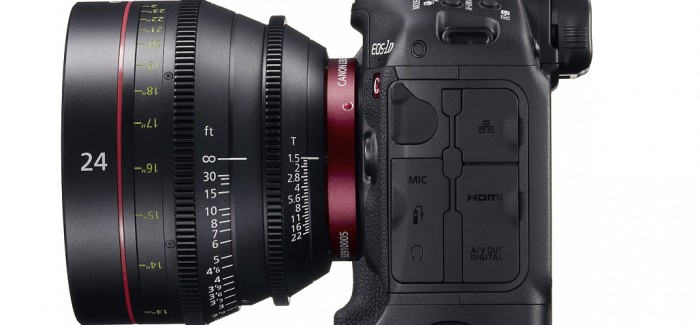

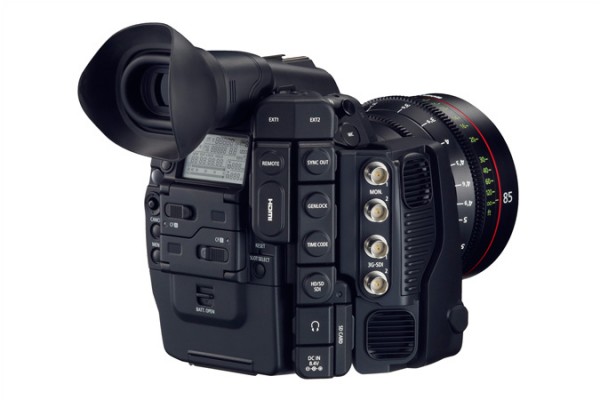
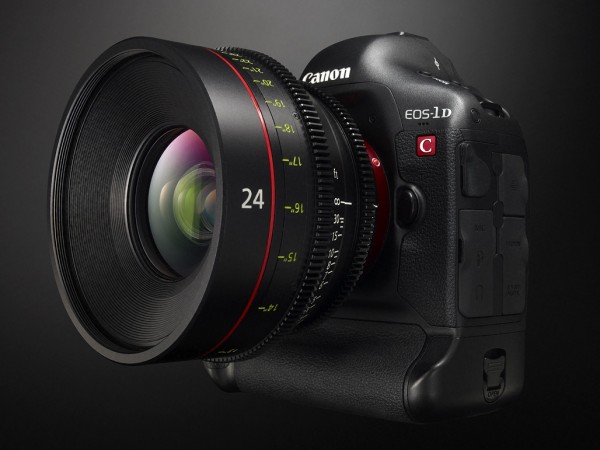
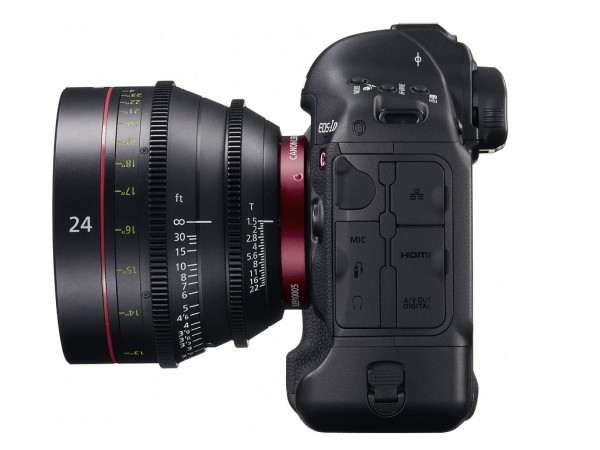
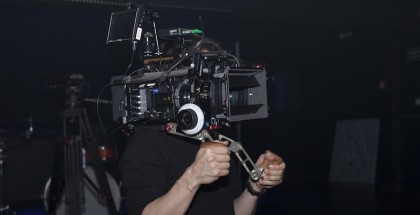




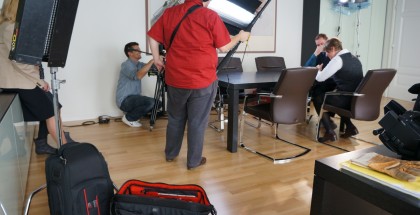














Comments